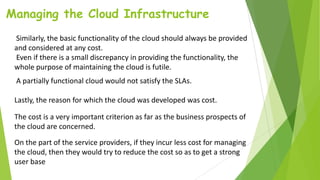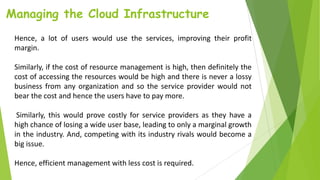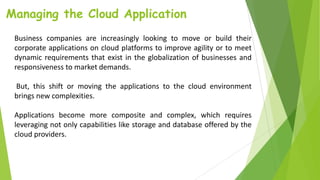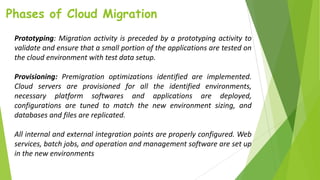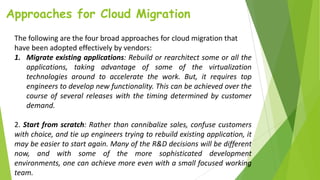This document discusses cloud computing architecture and management. It covers cloud architecture including the 4 layers - user/client layer, network layer, cloud management layer, and hardware resource layer. It also discusses anatomy of the cloud including the 5 core components - application, platform, infrastructure, virtualization, and physical hardware. Additionally, it covers network connectivity in cloud computing including public cloud access networking and the need for secure and efficient routing. Managing the cloud infrastructure, applications, and migrating applications to the cloud are also summarized.



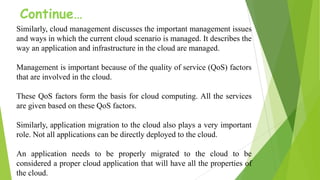
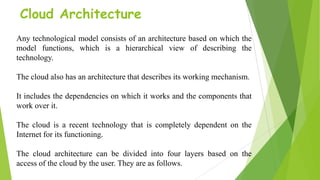





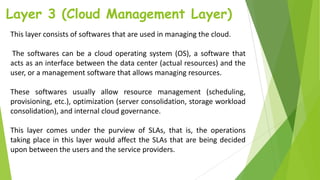
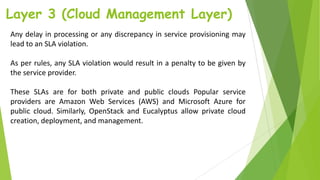
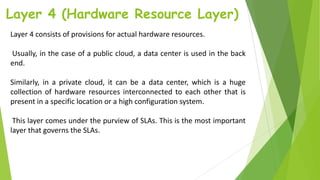

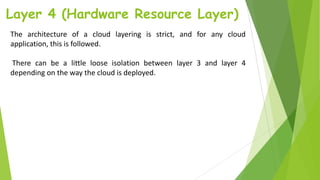

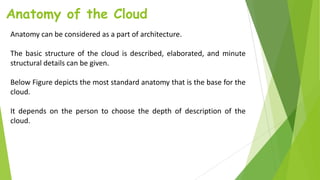



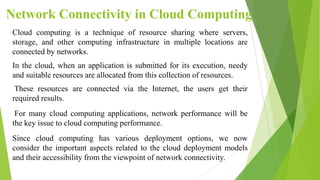

![Public Cloud Access Networking
If we want to reduce the delay without compromising security, then we
have to select a suitable routing method.
such as the one reducing the delay by minimizing transit hops in the end-
to-end connectivity between the cloud provider and cloud consumer.
Since the end-to-end connectivity support is via the Internet, which is a
complex federation of interconnected providers (known as Internet
service providers [ISPs]), one has to look at the options of selecting the
path.](https://image.slidesharecdn.com/cloudcomputingunit-3-230704165809-d51f6a8c/85/CLOUD-COMPUTING-UNIT-3-pptx-23-320.jpg)
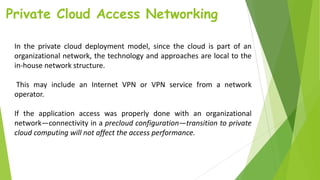


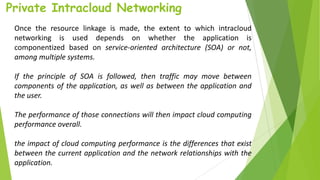




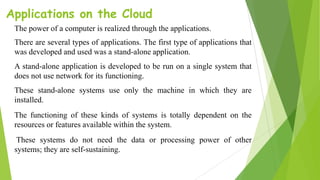




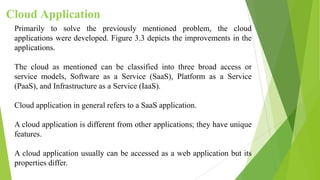
![Cloud Application
According to NIST [3], the features that make cloud applications unique
are described in the following (Figure 3.4 depicts the features of a cloud
application):](https://image.slidesharecdn.com/cloudcomputingunit-3-230704165809-d51f6a8c/85/CLOUD-COMPUTING-UNIT-3-pptx-38-320.jpg)









